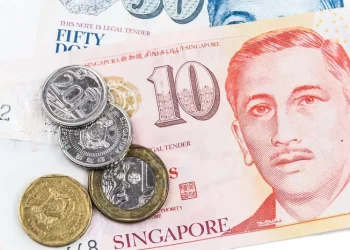Forex trading involves currency exchange, and the concept of “pip” plays a vital role in determining the price movement of currency pairs. The value of 1 pip is crucial to understanding how profits and losses are calculated in the forex market. This article will explore what a pip is, how a pip is measured, and how to calculate the pip value for different currency pairs. Understanding the pip value is essential to managing risk in the forex market and optimizing trading strategies.
What is a pip?
“Pip” stands for “percent point” or “price interest point”. It is the smallest unit of measurement used in the forex market to represent the change in value between two currencies. The concept of pips is used to standardize price movements, allowing traders to measure and track the fluctuations of currency pairs.
In most currency pairs, 1 pip is equal to 0.0001. However, there are exceptions to this rule. For currency pairs involving the Japanese yen, one pip is equal to 0.01 due to the low value of the yen relative to other currencies.
Importance of pips in forex trading
Pip is crucial in forex trading because it helps traders determine the amount of profit or loss on a trade. Traders can make a profit when the value of a currency pair moves a specific number of pips in a direction that favors the trader. Conversely, if the market moves against the trader, the trader will lose money.
Knowing the monetary value of 1 pip is essential for risk management. Traders use this information to decide how much they are willing to risk on each trade and to set appropriate stop-loss and take-profit levels.
How to Calculate the Value of 1 Pip
The value of 1 pip depends on several factors, including the currency pair being traded, the size of the trade, and the exchange rate at the time of the trade. To calculate the value of a pip, the following formula is commonly used:
Pip Value = (1 Pip / Exchange Rate) * Trade Size
Here’s a breakdown of each component:
1 Pip: This is the standard unit of measurement for a pip (0.0001 for most currency pairs).
Exchange Rate: The exchange rate of the currency pair being traded.
Trade Size: The number of units being traded, often referred to as the “lot size.” A standard lot is 100,000 units of the base currency, a mini lot is 10,000 units, and a micro lot is 1,000 units.
Let’s look at an example to better understand the calculation of pip value.
Example 1: Calculating the Value of a Pip for EUR/USD
Suppose you are trading the EUR/USD currency pair, which has an exchange rate of 1.2000. You are trading one standard lot (100,000 units). The formula to calculate the pip value would be:
Pip Value = (0.0001 / 1.2000) * 100,000 = 8.33 USD
In this example, the value of 1 pip is 8.33 USD for a standard lot. This means that for every 1 pip movement in the EUR/USD exchange rate, you will gain or lose 8.33 USD, depending on the direction of the movement.
Pip Value for Pairs Including the Japanese Yen
As mentioned before, the pip value is calculated differently for currency pairs involving the Japanese Yen (JPY). In these pairs, 1 pip is equal to 0.01. The calculation formula is the same, but the pip size changes. Let’s look at an example.
Example 2: Calculating the Pip Value for USD/JPY
Let’s say you are trading the USD/JPY currency pair and its exchange rate is 110.50. You trade 1 standard lot (100,000 units). The pip value is calculated as follows:
Pip Value = (0.01 / 110.50) * 100,000 = 9.05 JPY
In this case, 1 pip is equal to 9.05 JPY. This means that for every 1 pip movement in the USD/JPY exchange rate, you will gain or lose 9.05 JPY.
Factors that influence the value of 1 pip
While the basic calculation of pip value involves the exchange rate and trade size, other factors also affect the actual monetary value of 1 pip. Let’s analyze some of these factors.
1. Currency Pairs
As we have already seen, pip values will differ depending on whether you are trading JPY pairs or other currency pairs. For example, the pip value for EUR/USD and USD/JPY will be different even if the lot size is the same. Therefore, it is important to understand the specific pip value structure for each currency pair you trade.
2. Trade Size
The size of your trade can significantly affect the pip value. A standard lot (100,000 units) has a higher pip value than a mini lot (10,000 units) or micro lot (1,000 units). Traders can adjust the lot size they trade based on their risk tolerance and trading strategy, but it is important to understand how the pip value changes based on the size of the trade.
3. Exchange Rates
The exchange rate plays a vital role in determining the pip value. The higher the exchange rate, the lower the pip value, while the lower the exchange rate, the higher the pip value. Therefore, traders need to understand current market conditions and how exchange rates affect their pip values.
4. Base Currency
The base currency in a currency pair is the first currency listed. Pips are usually quoted in terms of the second currency in the pair, known as the quote currency. When the base currency is the same as the currency you are trading, such as the USD in the EUR/USD pair, pips are simple to calculate. However, if you are trading a currency pair with a different base currency, such as the EUR/GBP, you may need to convert pips to your desired currency for accurate risk management.
How to Use Pips in Forex Trading
Understanding pips is essential for risk management in Forex trading. It helps traders calculate potential profits and losses and make informed decisions when entering or exiting a trade. Here are some ways traders can use pips in their trading strategies:
1. Risk Management
Knowing the value of 1 pip, traders can set appropriate stop loss and take profit levels. For example, if a trader is risking $100 per trade, they can determine how many pips the price needs to move before hitting their stop loss point based on the pip value. This helps maintain consistent risk management across all trades.
2. Position Sizing
Pip values also play a role in determining position size. Traders can calculate pip values and adjust trade sizes to suit their risk tolerance. By trading smaller, lower pip value positions, traders can limit potential losses and trade more cautiously.
3. Profit Calculation
Pip values can help traders calculate potential profits. For example, if a trader expects a 50 pip move in their favor, they can multiply the pip value by 50 to estimate potential profits. Understanding the relationship between pip value and profit can help traders set realistic profit targets.
Conclusion
In Forex trading, the value of 1 pip is a fundamental concept that every trader must understand. It helps traders gauge price movements, calculate potential profits and losses, and manage risk effectively. By understanding how pip value is calculated and the factors that influence it, traders can make more informed decisions and improve their trading strategies.
Whether you are a beginner or an experienced trader, mastering the concept of pip value is essential to successful Forex trading. The more you understand how pip value works, the better you will be able to navigate the Forex market and optimize your trading performance.
Related topics:

































